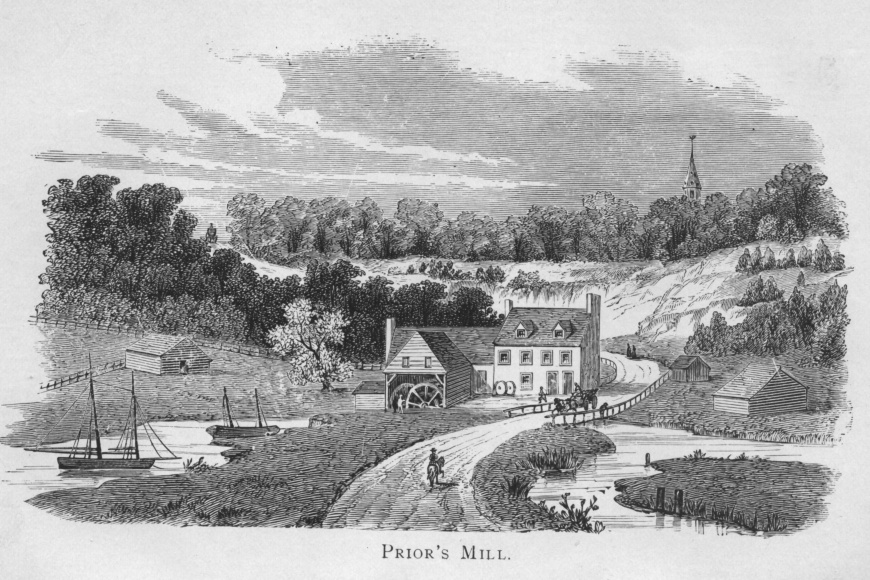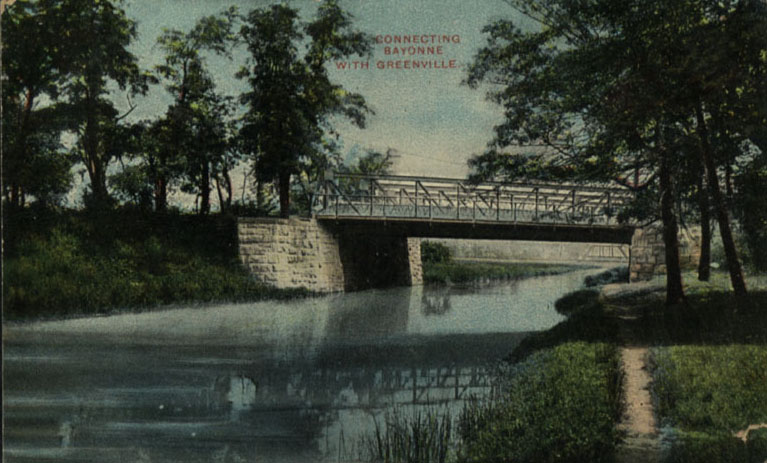The Jersey City of Yore
During the past several weeks, I’ve been researching the early history of Jersey City. Mainly, this consists of me pouring over books, prints, and ephemera in the research rooms of the New York Public Library and the Jersey City Free Public Library. Mind you: this is not a chore. The hours fly by.
My last post touched upon the concept of the urban pastoral. As I studied images depicting Jersey City of yore, my mind imagined a Jersey City built around nature. Not a city that built over it.

Fishing piers and small sailing vessels once populated this side of the Hudson River (Harriet P. Eaton, Jersey City and Its Historic Sites (1899).
Mill Creek ran through downtown Jersey City before being filled in for railroad construction in the 1830s. The creek powered Prior’s Mill, which processed wheat and other grains.

Prior’s Mill was mentioned in accounts from the Revolutionary War (Harriet P. Eaton, Jersey City and Its Historic Sites (1899).
The Morris Canal connected Jersey City to the western part of the state and served as the manufacturing and trade pipeline prior to the advent of rail.

A peaceful, bucolic scene on the Morris Canal at the Jersey City-Bayonne border (Courtesy of Jersey City Free Public Library).
As Jersey City redevelops and reinvents itself, weaving nature back into the urban fabric should be a high priority. This might ameliorate a plethora of issues–climate change, obesity, and mental health–and make Jersey City a much better place in which to live. Imagine a Jersey City with greenbelts, streams, and wooded paths.
Other cities have preserved and reclaimed slivers of the natural world? Why not Jersey City?
Here’s an old blog post of mine on the theme of the urban pastoral: https://new-savanna.blogspot.com/2011/04/urban-pastoral.html
Thanks for sharing!